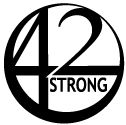The first thing we noticed upon entering Nicaragua was the smooth blacktop pavement of the highway. For the first time in a long time, there were no potholes. Good things don’t last, though, and a large road construction project soon blocked our passage.
Don’t Drive at Night
Every traveler who drives the Americas receives the advice to not travel at night. This has more to do with potholes and free-roaming cattle than with anything truly sinister, but the unlit and narrow gravel roads have a way of filling the mind with all things corrupt and blackhearted.
To get from NIC-24 to NIC-26, the highway that would bring us into León, our maps app made a series of interesting suggestions. The first suggestion had all the hallmarks of a completely legitimate turn-off, minus an actual road. Jordan hit the brakes just fast enough to prevent us from going airborne over the banks of a dry river bed.
The next turn-off led us down the exact type of desolate, unlit road that your grandma told you never to drive down. It’s only two kilometers, I said reassuringly from the navigator’s seat. It only takes a few feet to stage an ambush, Jordan quipped sagely.
Several dark and claustrophobic minutes later, we emerged unscathed onto a proper highway that delivered us to our AirBnB in the city of León.
Giant Women and Balladeers
It wasn’t even December when we arrived in León (November 29, in case you were wondering), but the city was ready for Christmas. The signs of festive anticipation were as obvious as the giant wood-and-paper statue of a woman dressed to dance in the Zócalo, or city center. Standing a good two stories tall, La Gigantona, as she is known, towers over the squat, single-story buildings that define most of León.
While the giant Gigantona in the zócalo stands unmoving, beating drums call smaller versions of her into a frenetic dance. Every day during the long lead-up to Christmas, the streets of Nicaraguan cities host a wild ritual. Rounding a street corner, our ears erupted with the mad beating of a drum. Standing in the middle of the street danced a group of children, some dressed with oversize heads, one beating a drum and calling out complaints and one dressed as la Giganona herself.
La Gigantona is no mere woman out for a night on the town. She is a gaudy avatar of Spanish colonialism. The mestizo characters dancing with her are the indigenous community. The large heads of the Enanos Cabezones house brains greater than those of their Spanish oppressors. El Coplero, the balladeer, makes la Gigantona dance to the beat of his drum, pausing only to cry out the complaints of the oppressed.
Update: Unfortunately, the sound on the above video failed to load and I have no idea why. Although I distinctly remember sound in the original recording, it seems to have been lost at some point. Sorry…
An Unconventional Lecture Hall
Our hosts, Katie and Mark, told us that el Museo de la Revolución (the Revolutionary Museum) was a must-see while in the city. The museum’s main selling point was that each guide was a former Sandinista revolutionary, who would tell their own stories alongside those of their national history.
From the outside, el Museo de la Revolución looks a bit like a squatter’s house. Very little suggests the presence of a museum. Graffiti next to the entrance accuses George W. Bush of genocide. Stern men watched us from the steps leading inside. Cameras in hand, we entered.
Our guide, whose nom-de-guerre was Javier, guided us through the museum’s two small galleries, their walls adorned with photos and newspaper cutouts from the revolution. Given my near-total ignorance of Nicaragua’s civil war, we found the information in the museum and Javier’s telling of the story fascinating. I’m not sure I ever learned of Nicaragua’s civil war in school, although a competing but unproven hypothesis states that I simply didn’t pay attention.
Javier guided us through photos and other paraphernalia that documented Nicaragua’s bloody history, from one civil war to the next, often featuring a strong role for the United States.
Americans are accustomed to hearing their country maligned abroad for the hand it plays in the affairs of other countries. Although not all complaints are based on fact, Nicaragua can rightly boast a rather complicated history with the US and one in which many complaints stand up to inspection.
Following a grand colonial tradition, the U.S. Marines established and trained a local military force that promptly abused the civilian population. What followed was an era of wars and assassinations, with the anti-colonial forces led by Augusto César Sandino, whose name would be invoked in many struggles that followed.
We followed Javier through the cut-outs and photos of his country’s history. Across time and through the front pages of newspapers, we exchanged glances with his former unit commanders. The museum itself is a monument to Nicaragua’s revolutionary past, having been used alternately by autocratic and revolutionary administrations. We stepped onto the roof, from where we could glimpse León’s rooftop expanse, hemmed in by a ring of volcanos less prone to erupt than the people in their shadows.

Siesta
Around the corner but not out of the gravity well of revolutionary memory, vendors napped next to their wares under the afternoon heat. Busy people and cars that wouldn’t stop hurried past painted wooden animals and plastic-wrapped candies. Immersed in the scent of spices and the colors of dyed wool, we added the beat of our own footsteps to the hurried masses, unaware that the stormclouds gathered on the horizon augured greater storms to come in our homeland.


























